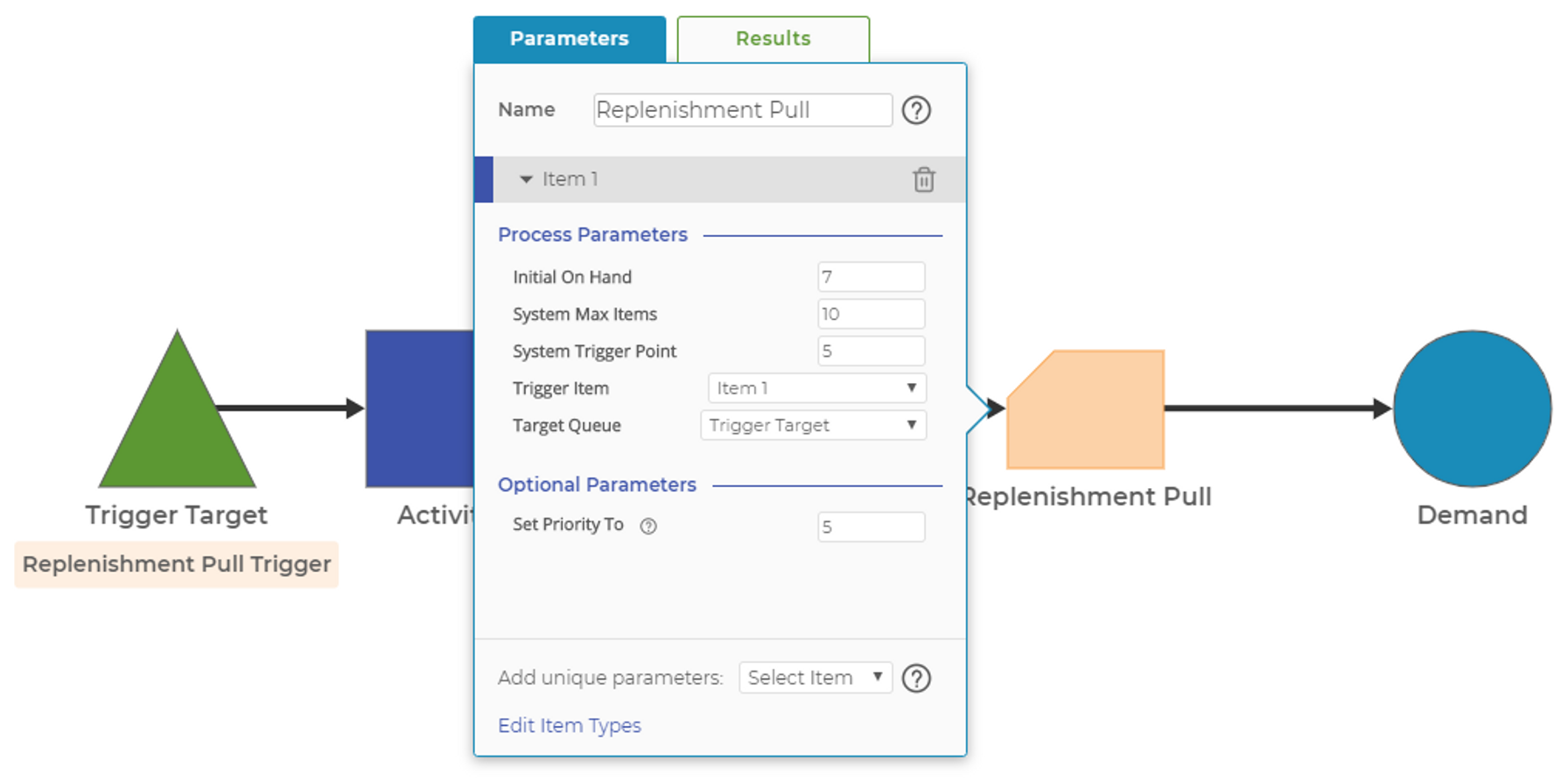Pull Block
The Pull Block is a special block that provides the Lean functionality of a replenishment pull system. Among the few blocks that generates new items in the model, this block is used in conjunction with the Demand Block in "Pull" mode.
The image below shows the basic layout of a replenishment pull model, and the input parameters of the block.

The parameters on the Pull Block define both when a new order will be triggered and what the size of the order will be.
Note that the block is connected to a downstream Demand Block, and the upstream "Trigger Target" queue is selected as a parameter of the block. The Pull Block acts as a queue, holding items until the Demand Block triggers their move. The Pull Block compares its inventory level to the "System Trigger Point" parameter and, as needed, triggers a new replenishment batch of items. These items are sent to the "Target Queue" to begin their path through the process.
It is important to understand that the Pull Block keeps track of both its on-hand, inventoried items and those it has ordered but have not yet arrived. This total inventory count, on-hand plus on-order, is called the system, or loop, inventory and it will never exceed the "System Max Items" parameter entered in the Pull Block.
As a summary, here is a list of all parameters available in the block:
- Initial On Hand represents the initial amount of inventory available in the block at the beginning of the simulation run. Pull systems in a stable process should never run out of inventory, so it's a good idea to start the model with a typical level of inventory based on pull system sizing.
- System Max Items represents the total amount of inventory allowed in the pull system (i.e., on-hand and on-order combined).
- System Trigger Point represents the inventory point at which the pull system triggers a replenishment order. The trigger point is compared to the on-hand plus on-order amount to determine when to trigger. The pull system always triggers to reach the "System Max Items" number, so the trigger amount is equal to: System Max Items - (on-hand + on-order).
- Target Item identifies the item that should be created when the replenishment order is triggered. The default is to create the same item, but having this target item allows you to create logical items, such as orders, when the item listed in the Pull Block is getting low.
- Target Queue identifies the queue where the replenishment batch should begin its processing. Only queues can be selected to receive the triggered batch. This is because the model must be able to hold the batch in a queue before it moves through the remaining steps of the process before returning to the Pull Block.
- Set Priority To sets item and batch priority. See the post on Item Priorities for more information
Like most blocks in Process Playground, you can add multiple items to the Pull Block. Each item operates independently of the other items in the block and has its own replenishment pull parameters.
Was this helpful?
